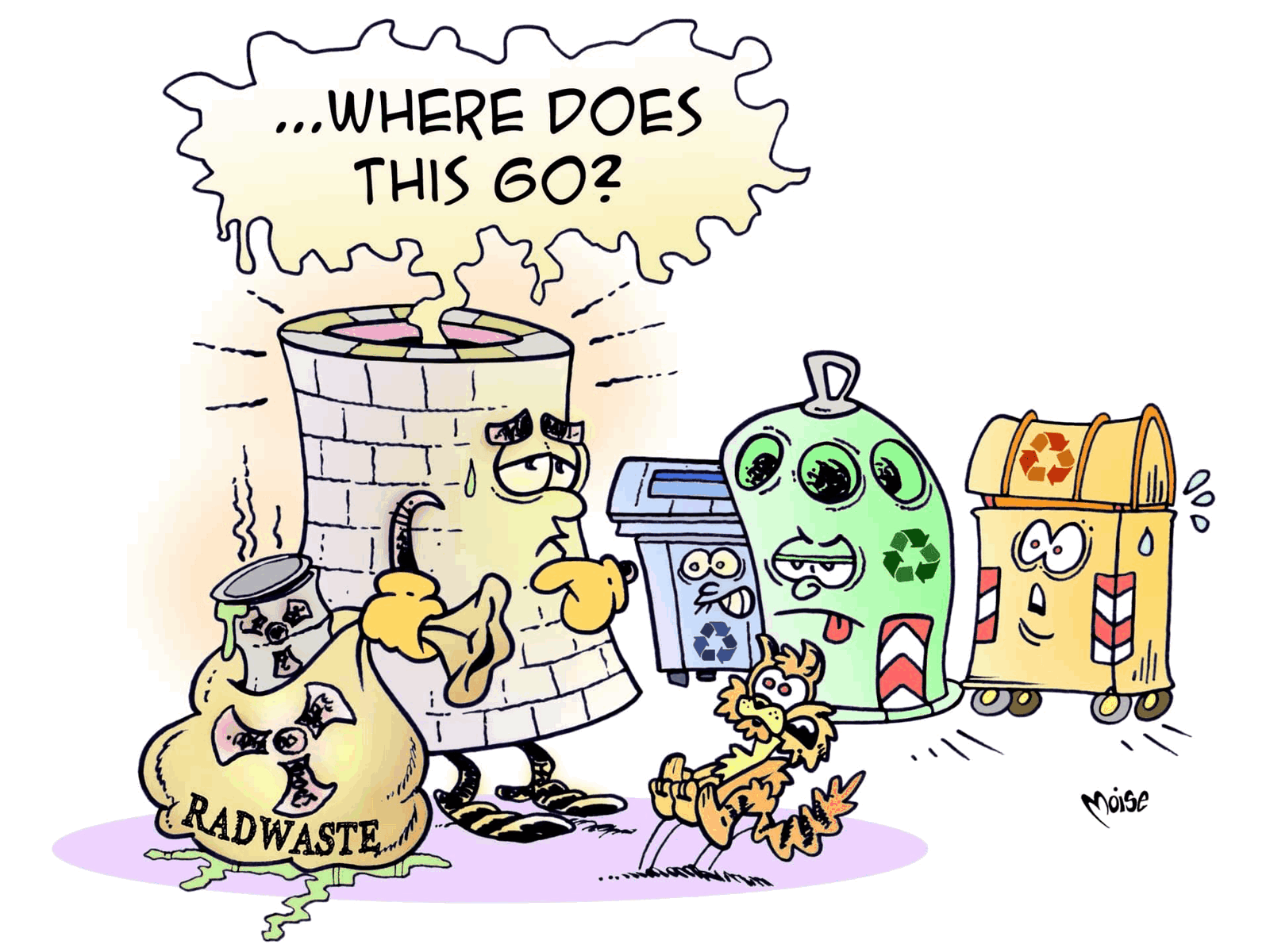
Nuclear Energy
 An atom, the smallest constituent unit matter, is composed of a nucleus, formed by protons and neutrons surrounded by a cloud of electrons. Every transformation of the nucleus, by way of fusion (when two nuclei join) or fission (when a nucleus divides into smaller nuclei) releases a high quantity of energy.
Nuclear technology uses the thermal energy released by splitting the atoms - generally uranium or plutonium atoms - to produce electricity.
Nuclear energy is not based on the combustion of fossil fuels and does not produce greenhouse gases, but it does present other issues. The waste products of nuclear reactions, are, in fact, radioactive and dangerous for living beings. The period for the decay of the radioactivity can last from
hundreds to thousands of years. Therefore, the waste must be suitably stored and screened to prevent the release of radioactivity into the environment.
Furthermore, every nuclear reactor must be designed, built and maintained in a manner that guarantees extremely high safety standards in order to protect the community and to prevent accidents. We only have to remember back the most serious accidents in history: the disaster of Fukushima, in Japan, in 2011 when an earthquake and a tsunami caused a series of incidents with four separate explosions and the worst nuclear disaster of all time in the Ukraine, in 1986. In Chernobyl an explosion, mainly caused by human error, blew off the cover of the nuclear reactor, causing a massive fire. A cloud of radioactive material was released, which required the evacuation of 336,000 people in the area surrounding the power station and reached Eastern Europe, Germany, Austria, Italy, France, and even as far afield as the East Coast of North America.
An atom, the smallest constituent unit matter, is composed of a nucleus, formed by protons and neutrons surrounded by a cloud of electrons. Every transformation of the nucleus, by way of fusion (when two nuclei join) or fission (when a nucleus divides into smaller nuclei) releases a high quantity of energy.
Nuclear technology uses the thermal energy released by splitting the atoms - generally uranium or plutonium atoms - to produce electricity.
Nuclear energy is not based on the combustion of fossil fuels and does not produce greenhouse gases, but it does present other issues. The waste products of nuclear reactions, are, in fact, radioactive and dangerous for living beings. The period for the decay of the radioactivity can last from
hundreds to thousands of years. Therefore, the waste must be suitably stored and screened to prevent the release of radioactivity into the environment.
Furthermore, every nuclear reactor must be designed, built and maintained in a manner that guarantees extremely high safety standards in order to protect the community and to prevent accidents. We only have to remember back the most serious accidents in history: the disaster of Fukushima, in Japan, in 2011 when an earthquake and a tsunami caused a series of incidents with four separate explosions and the worst nuclear disaster of all time in the Ukraine, in 1986. In Chernobyl an explosion, mainly caused by human error, blew off the cover of the nuclear reactor, causing a massive fire. A cloud of radioactive material was released, which required the evacuation of 336,000 people in the area surrounding the power station and reached Eastern Europe, Germany, Austria, Italy, France, and even as far afield as the East Coast of North America.




